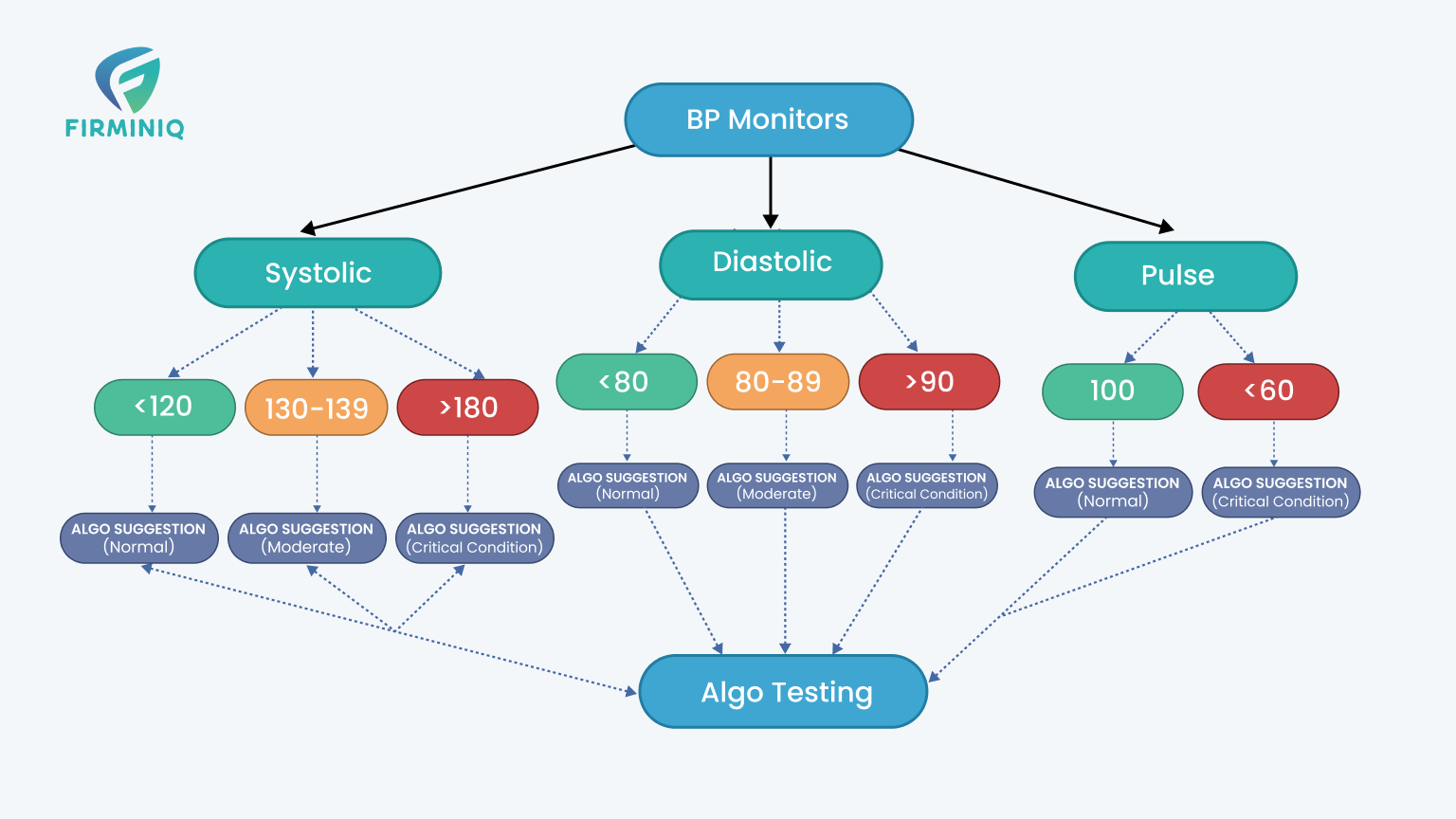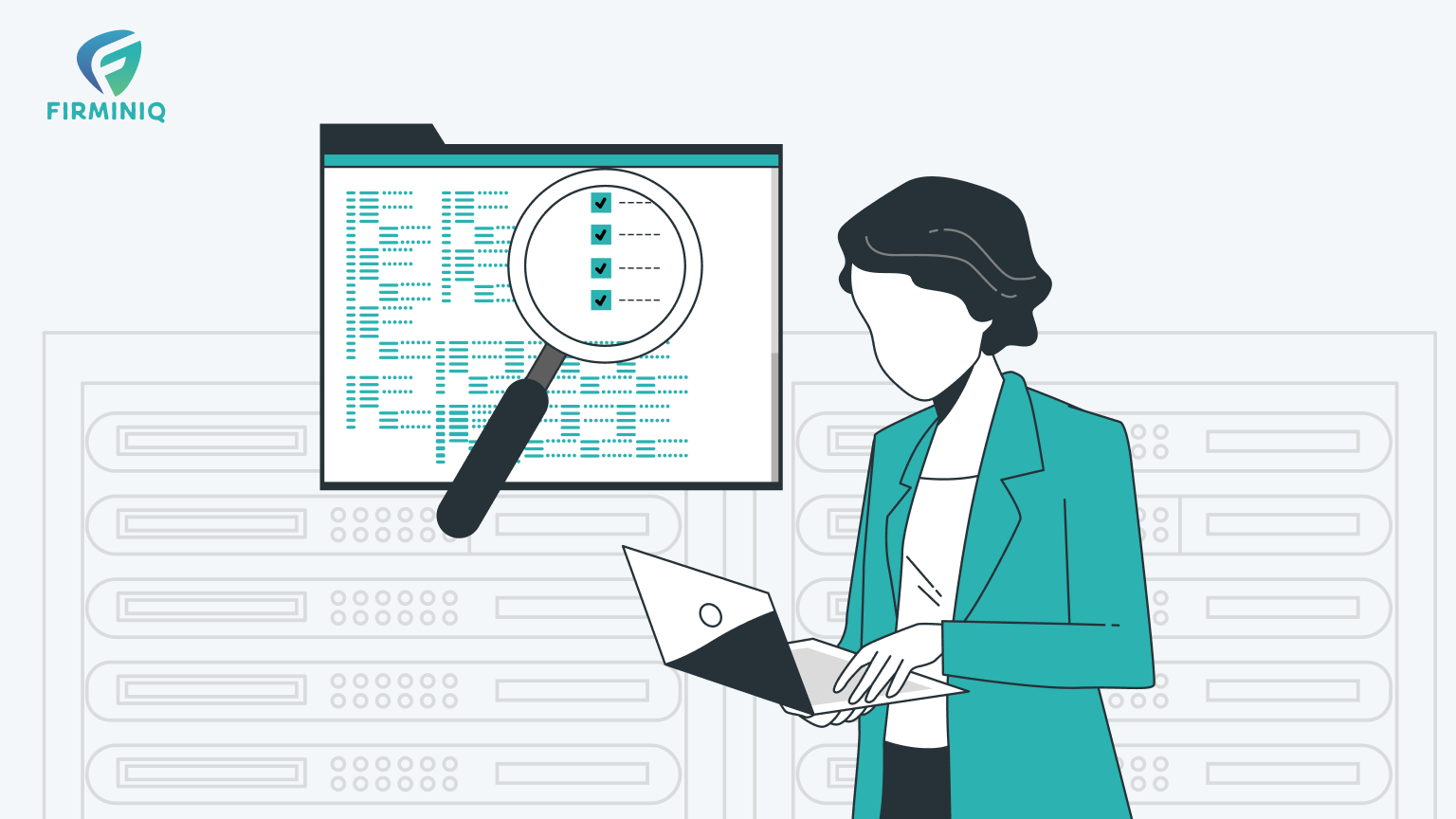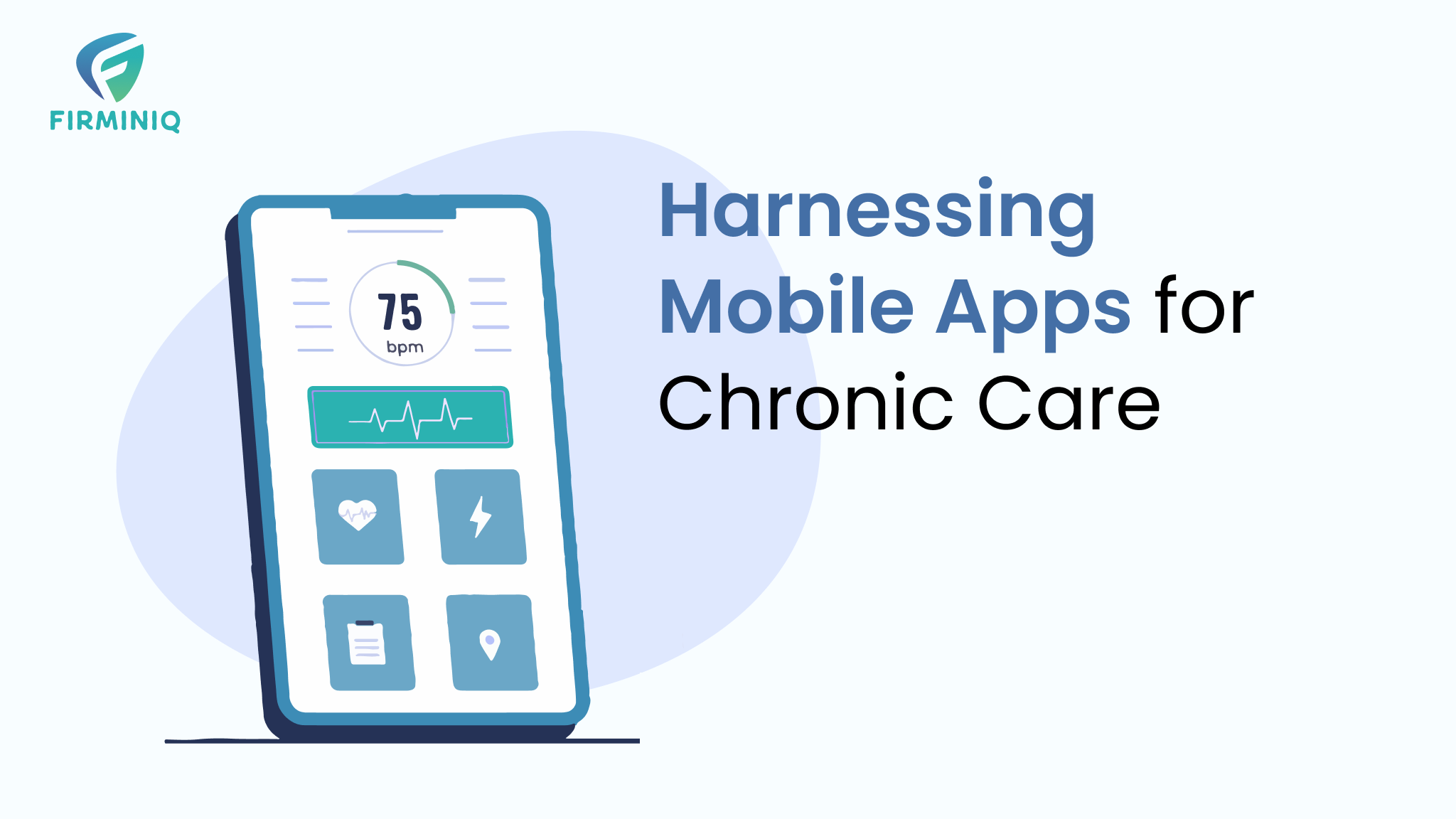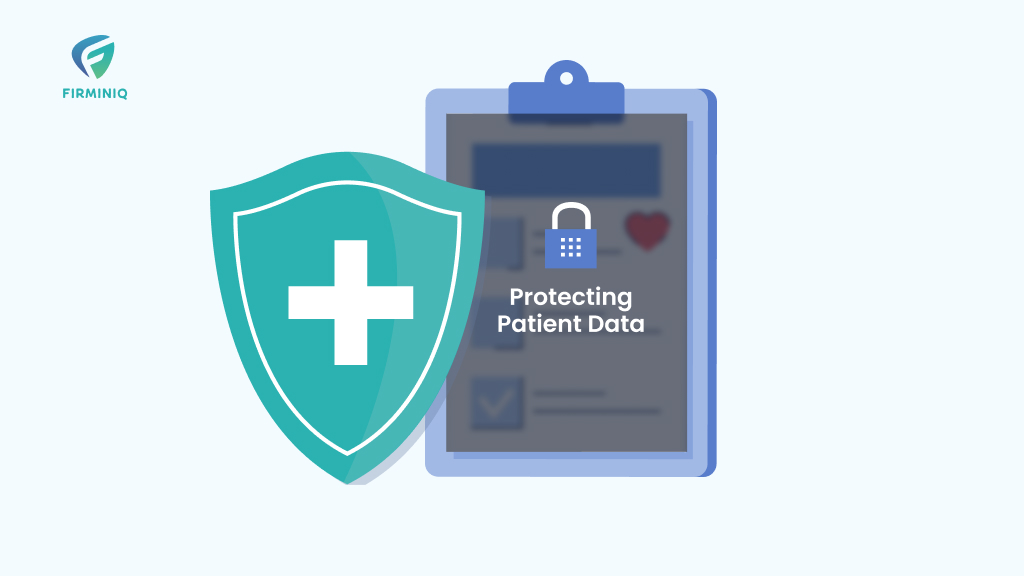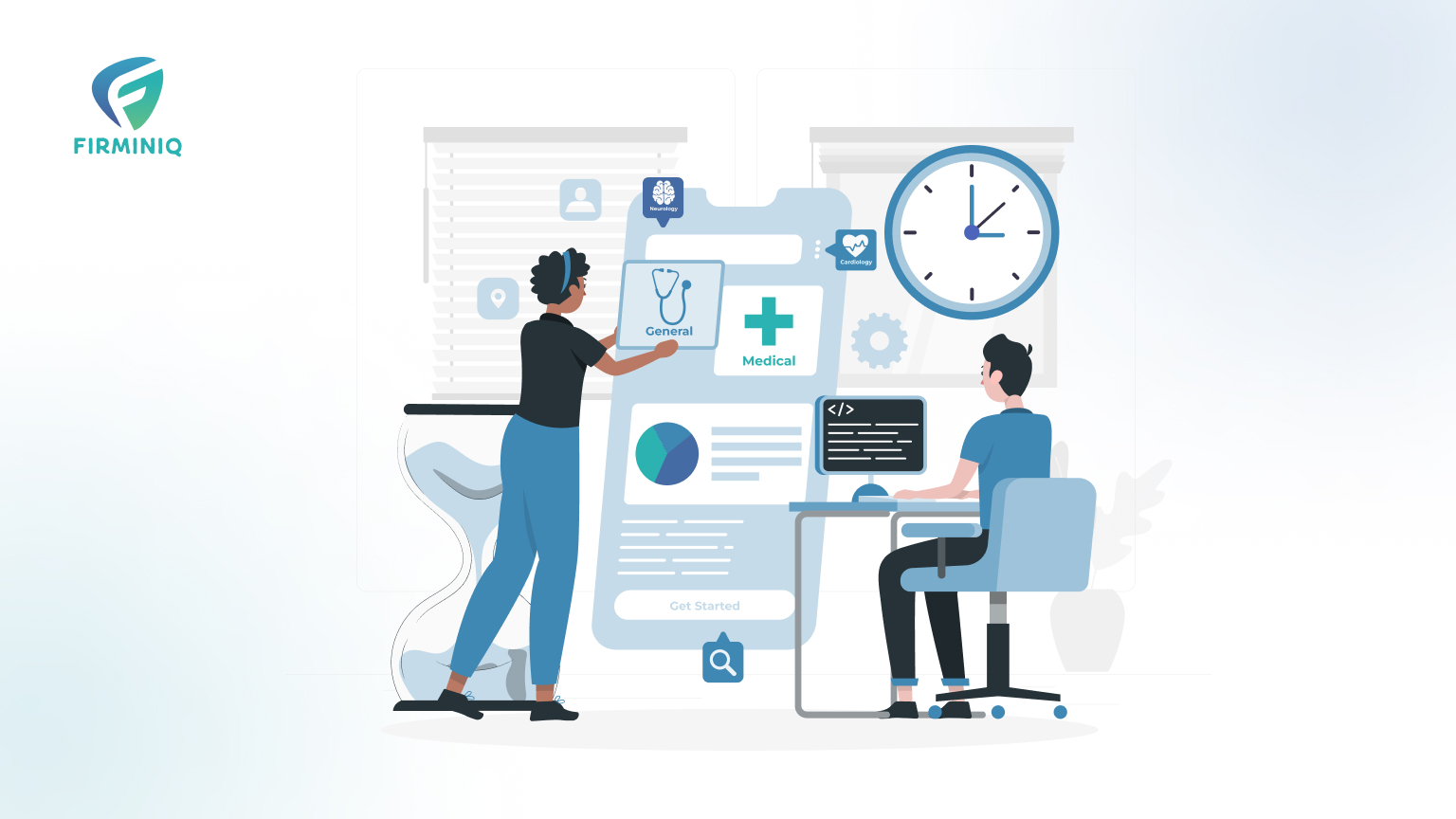In the wide area of modern healthcare, Remote Patient Monitoring (RPM) stands as a pillar, revolutionizing how quality healthcare is delivered. At its core, RPM relies on advanced algorithms to analyze patients’ health data and provide valuable information to healthcare service providers. However, assuring the accuracy and reliability of these algorithms is paramount for successful patient care. In this blog, we will discover how strategic algorithm testing can optimize RPM, in other words improving patient outcomes and healthcare efficiency. Optimizing RPM relies on the accuracy and efficiency of its algorithms, which analyze patient data and provide essential insights.
Effective testing strategies are crucial to ensure these systems function reliably and accurately. Unit testing verifies individual components, while integration testing ensures smooth interactions among system parts. Performance testing evaluates how algorithms handle real-world conditions, measuring speed and resource usage under various loads. Regression testing checks for stability by confirming that updates don’t introduce new issues. These comprehensive testing methods enhance the robustness, responsiveness, and reliability of RPM systems, ultimately improving patient care. Thorough algorithm testing ensures that RPM solutions perform effectively in diverse and dynamic healthcare environments.
Embracing the Significance of RPM
RPM plays a vital role in healthcare delivery, offering real-time monitoring and proactive care outside regular healthcare settings. Through wearable health devices, sensors, and mobile applications, RPM helps healthcare providers to monitor patients’ vital signs, detect inconsistency, and intervene quickly whenever necessary.
Embracing the significance of RPM revolutionizes healthcare delivery by enabling continuous, real-time monitoring of patients’ health outside traditional clinical settings. RPM leverages wearable devices and sensors to track vital signs, providing healthcare professionals with timely data to make informed decisions. This approach enhances patient engagement, supports early intervention, and helps manage chronic conditions more effectively. By bridging the gap between patients and providers, RPM improves health outcomes and optimizes the efficiency of healthcare systems.
The Important Role of Algorithms in RPM
At the soul of RPM lie sophisticated algorithms tasked with interpreting vast amounts of patient data (like various type of body health readings). These algorithms analyze trends, detect inconsistency, and generate actionable inputs for healthcare providers. Algorithms are integral to RPM, shaping its effectiveness and capabilities. They analyze patient data, identify patterns, and offer actionable insights to healthcare professionals. Through constant surveillance of vital signs and health parameters, algorithms enable proactive interventions and personalized treatment strategies. Their precision and dependability are essential in facilitating timely actions and enhancing patient results. Within RPM, algorithms stand as fundamental components, driving remote healthcare delivery with accuracy and efficiency.
Challenges in Algorithm Testing for RPM
Testing algorithms for RPM presents unique challenges compared to traditional software applications. Healthcare algorithms must adhere to strict standards for correctness, reliability, and safety. The dynamic nature of healthcare environments introduces complexities such as data variability, connectivity issues, and patient diversity. Addressing these challenges requires tailored testing strategies that account for the intricacies of healthcare data and patient care workflows.
Testing algorithms for RPM presents several unique challenges.
- The critical nature of healthcare demands exceptionally high standards for accuracy and reliability.
- The diverse and irregular nature of patient data complicates comprehensive testing efforts.
- Fluctuations in connectivity and data quality can affect the consistency of algorithm performance.
Moreover, ensuring seamless integration with various medical devices and healthcare systems adds another layer of complexity. Protecting patient data privacy and security during testing is also essential. Addressing these challenges requires flexible and robust testing strategies to ensure RPM algorithms are both effective and dependable.
Solutions for Using Unit Testing for Validation
1. Using Unit Testing for Validation
Unit testing serves as the base of algorithm development in RPM. By dividing individual components and functions, developers can validate their accuracy and robustness. Unit tests assess algorithmic logic, edge cases, and boundary conditions, assuring accuracy throughout various scenarios. Unit testing in RPM focuses on validating and verifying the accuracy and reliability of individual algorithm components. This process ensures that each part functions correctly, enabling early detection and correction of errors.
a. Automate Unit Tests: Implement automated unit testing frameworks such as JUnit, NUnit, or pytest to streamline the testing process and ensure continuous validation throughout development.
b. Develop Comprehensive Test Cases: Create detailed and varied test cases that cover all scenarios, including edge cases, to thoroughly test the RPM algorithms.
c. Generate Realistic Mock Data: Use mock data that accurately simulates real patient data to test how the algorithm handles various conditions and data types.
d. Integrate Continuous Integration (CI): Incorporate unit testing into a CI pipeline using tools like Jenkins, Travis CI, or GitHub aActions to automatically run tests with every code change.
e. Adopt Test-Driven Development (TDD): Write tests before code implementation to ensure that the code is developed with testing in mind from the outset, enhancing reliability and maintainability.
f. Regularly Review and Update Tests: Periodically review and update test cases to reflect new features or changes in requirements, ensuring they remain current and effective.
g. Use Code Coverage Tools: Employ tools like SonarQube or Coveralls to measure code coverage and identify untested parts of the code, aiming for comprehensive test coverage.
h. Isolate Dependencies with Mocking Frameworks: Use mocking frameworks to isolate the algorithm from external dependencies during testing, ensuring tests focus solely on the algorithm’s functionality.
i. Conduct Peer Reviews and Pair Programming: Engage in peer reviews and pair programming to improve the quality and coverage of tests through collaborative coding and reviewing practices.
j. Document Test Procedures: Maintain detailed documentation of test procedures, cases, and outcomes to provide clarity and guidance for future development and maintenance efforts.
2. Ensuring Integration and Compatibility through Comprehensive Testing
Integration testing is critical in RPM to evaluate the compatibility of algorithms within the vast healthcare environment. This phase verifies data consistency, system operability, and compatibility with external interfaces. Collaborative testing efforts involving developers, healthcare service providers, and system integrators assure smooth interactions between healthcare systems, applications, and algorithmic components. Comprehensive testing ensures that RPM algorithms seamlessly integrate with different systems and devices. This process validates data consistency, system responsiveness, and interoperability within the healthcare ecosystem.
3. Performance Testing for Robustness and Responsiveness
Robustness and responsiveness are needed considerations in RPM, where algorithms must handle simultaneous data streams from multiple patients. Load testing, stress testing, and scalability testing enable QA engineers to gauge the algorithm’s ability to scale with growing patient population while maintaining responsiveness and reliability. Performance testing is essential to confirm that RPM systems can meet real-world requirements. This type of testing assesses the robustness and responsiveness of RPM algorithms under different conditions and workloads. It evaluates key metrics such as processing speed, latency, and resource utilization. By emulating multiple simultaneous data streams and high-stress situations, performance testing identifies potential bottlenecks and inefficiencies. Ultimately, this ensures that RPM systems are reliable and effective as the number of patients and the complexity of data increase.
4. Ending Risks with Regression Testing
Regression tests authenticate algorithmic accuracy, stability, and observance with regulatory requirements. Automated regression testing suites facilitate seamless integration of updates, eliminating risks and ensuring steady patient monitoring services. Continuous integration workflows and automated regression testing frameworks enable smooth incorporation of updates, reducing the risks and guaranteeing steady patient monitoring services.
Role of Test Data in the Algorithm Testing of RPM
In the context of RPM, test data plays a crucial role in validating the accuracy, performance, and reliability of algorithms. These algorithms often analyze patient data to provide insights, alerts, or treatment recommendations. Here’s how test data is instrumental in this field:
1. Ensuring Accuracy
Test data is essential for verifying that algorithms correctly interpret and analyze patient data. This ensures that the results and recommendations provided are accurate.
Example: Algorithms predicting heart rate anomalies need test data from various heart rate patterns, including normal and abnormal rhythms, to confirm accuracy.
2. Covering Diverse Scenarios
The test data should include a variety of scenarios to ensure the algorithm can handle different patient conditions and edge cases it might encounter.
*Normal Cases: Data representing standard patient conditions.
*Edge Cases: Data from patients with rare conditions or unusual health metrics.
*Corner Cases: Combinations of extreme health data points.
*Negative Cases: Incorrect or incomplete data to test error handling.
3. Performance and Scalability
In remote patient monitoring, algorithms need to process large volumes of data quickly and efficiently. Performance testing with extensive datasets helps ensure that the algorithm can scale and perform well under real-world conditions.
*Stress Testing: Using large datasets to identify performance limits and memory usage.
*Real-time Processing: Ensuring the algorithm can handle live data streams without delays.
4. Robustness and Reliability
Test data helps in assessing the robustness of algorithms, ensuring they can handle unexpected or erroneous inputs without failing or producing incorrect results.
*Fault Tolerance: Testing how algorithms respond to corrupted data or transmission errors.
*Stability: Ensuring consistent and reliable performance over time with various data inputs.
5. Compliance and Safety
In healthcare, **test data** must ensure that algorithms comply with regulatory standards and maintain patient safety. Testing algorithms against standardized datasets helps in validating compliance and ensuring safe operation.
*Regulatory Compliance: Using test data that meets regulatory standards for health data.
*Patient Safety: Ensuring algorithms provide safe and reliable recommendations.
Key Considerations for Effective Test Data
1. Diversity: – Include data from different patient demographics and conditions.
– Ensure coverage of both common and rare conditions.
2. Relevance: – Use data that accurately reflects real-world patient monitoring scenarios.
3. Realism: – Whenever possible, utilize real patient data (with appropriate anonymization) or realistic synthetic data that mimics real patient conditions.
4. Size: – Test with both small and large datasets to ensure the algorithm performs well across different data volumes.
5. Consistency: – Ensure the test data is consistent to provide reliable and repeatable test outcomes.
Example: Testing a Blood Pressure Monitoring Algorithm
Test Data Considerations:
1. Normal Cases: – Blood pressure readings within the normal range.
2. Edge Cases: – Extremely high or low blood pressure readings.
3. Performance Testing: – Large datasets with continuous blood pressure readings to test real-time processing.
4. Negative Cases: – Invalid readings due to sensor errors or data corruption.
**Sample Test Data:**
# Normal Case
normal_readings = [120/80, 118/78, 119/79]
# Edge Case: High blood pressure
high_bp_readings = [180/120, 190/130]
# Edge Case: Low blood pressure
low_bp_readings = [90/60, 85/55]
# Performance Case: Continuous readings over a month
large_dataset = generate_large_blood_pressure_dataset()
# Negative Case: Corrupted data
invalid_readings = [“120/80”, None, “invalid”]
By using diverse and realistic test data, you can thoroughly evaluate algorithms used in remote patient monitoring, ensuring they are accurate, efficient, and reliable in a variety of scenarios.
Conclusion: Advancing Healthcare Through Strictly Adhere to Algorithm Testing
RPM has a huge capacity to transform healthcare delivery, offering continuous, personalized care to patients. At its core, RPM’s success is in the reliability and accuracy of algorithms that help give strength to patient monitoring and decision-making processes. By using strategic algorithm testing methodologies, developers and QA Engineers can optimize RPM algorithms for accuracy, scalability, reliability, and responsiveness,
As RPM continues to develop, productive algorithm testing strategies will play a crucial role in driving inventions and revolutionizing healthcare delivery. Strict algorithm testing not only prevents potential failures but also ensures compliance with healthcare regulations and standards. It helps identify and rectify issues early in the development process, saving time and resources. Continuous testing and validation foster trust among healthcare providers and patients in the reliability of RPM systems. This meticulous approach supports the integration of advanced technologies into everyday medical practice, paving the way for personalized and precise patient care. By adhering to rigorous testing protocols, the healthcare industry can harness the full potential of innovative RPM solutions

